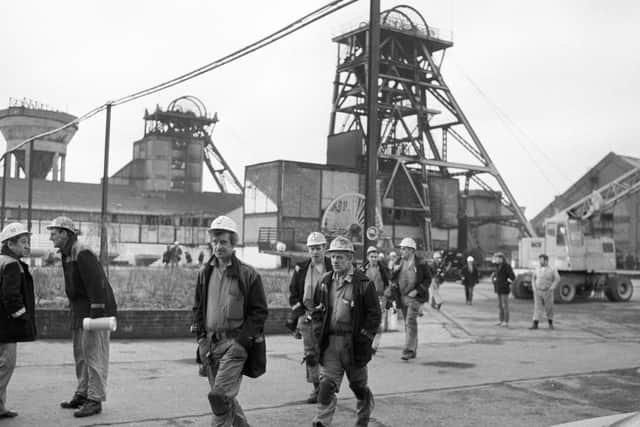New exhibition and film show untold stories of the miners' strike


While stories of the miners’ strike tend to focus on the workers, visitors at the museum in Wakefield are now able to see how the women of the coalfields were as vital to the events as men, using research from University College London and the University of Reading carried out in 2018 and 2019.
The free exhibition, which runs until January next year, highlights the pivotal and differing roles women played, whether they made up food parcels, went out to work to bring in a wage, stood on picket lines, supported husbands behind the scenes – indeed, whether they gave their support to the strike or came out in opposition against it.
Advertisement
Hide AdAdvertisement
Hide AdThe year-long strike, which pitted the National Union of Mineworkers against Margaret Thatcher’s Conservative government, finished in 1985.


Anne Bradley, curator of social and oral history at the National Coal Mining Museum for England said: “This is a story that will strongly resonate with people who had friends and family working in the mining industry and many of our visitors.
“It is a vital piece of work that will shed new light on a period of time that it would be all too easy to be seen as purely a man on man conflict.
“We are delighted that they are donating the archival collections from their research as it will help us to continue to tell the story in mining in unique and inspiring ways.”
Advertisement
Hide AdAdvertisement
Hide AdResearcher Florence Sutcliffe-Braithwaite from University College London said: “This special exhibition at the Museum allows visitors to hear from these women, in their own words, about life during the strike.
“In the exhibition, you can also watch a video of South Yorkshire women and their husbands discussing the strike, see posters from the time, and photos of women and communities in the strike taken by Keith Pattison and John Harris.”
Former mineworkers, their wives and supporters have also been interviewed for a new film which hopes to preserve the "heroic struggles" of those involved.
Commissioned by the Orgreave Truth and Justice Campaign (OTJC), the aim is to record stories from those involved in the strike as well as inspire future generations to become involved in the trade union movement.
Advertisement
Hide AdAdvertisement
Hide AdJoe Rollin of the OTJC said: "We were worried that we could lose stories and memories about the strike, so we wanted to capture real stories on camera.
"We hope it will also be used as an education tool for youngsters today."
Shaun Dey of activist video collective Reel News, which has made the film, said he was politicised by the miners strike, and is well aware of its legacy.
"The idea of the film is to remind people of what happened, and to put mineworkers back in their rightful place."
The mining industry has collapsed over the past 20 years and there are now no deep pits in Scotland, just one in Wales and a handful in Yorkshire, once the heartland of the UK coalfield.
